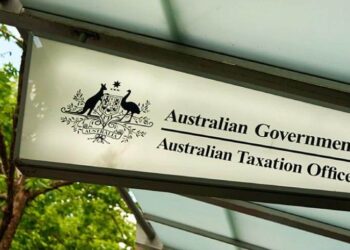Despite the restrictions placed on LRBAs by the ATO’s safe harbour guidelines for related-party lenders combined with the withdrawal of the big four banks from LRBA lending, the demand for LRBAs remains steady.
And with interest rates so cheap, the incentive for SMSF trustees to borrow money personally and then on-lend to their SMSF has never been greater.
How do LRBAs work?
An LRBA is a particular type of loan structure where the lender has recourse only to the asset purchased using the loan. As SMSFs are not allowed to borrow, an LRBA is an exempted loan that involves establishing a holding trustee to legally hold the asset on behalf of the SMSF trustee.
Generally, the fund may acquire any asset through an LRBA that is allowed under the SIS legislation. Still, it must be a single acquirable asset, with separate LRBAs established where multiple assets are acquired.
A bank or related-party lender can finance an LRBA, but the transaction must be on commercial terms where it’s the latter. While the ATO’s 2016 safe harbour guidelines only cover property and listed shares, the burden of proof is on the SMSF trustee to demonstrate the LRBA is on an arm’s-length basis for all related-party LRBAs.
The investment strategy
As SMSF trustees are required to understand the risks associated with entering into such an arrangement, it’s essential to update the fund’s investment strategy before purchasing the asset.
Remember, too, that in 2019 the ATO wrote to 17,000 SMSF trustees with over 90 per cent or more of their total investments in an LRBA in an attempt to have them “review their investment strategy and clearly document the reasons behind the investment decisions”.
The ATO considers such a lack of diversification, or concentration risk, can expose the SMSF and its members to unnecessary risk if a significant investment fails.
Does the title have to be transferred?
Is there a requirement to transfer the title back into the name of the fund once the LRBA is repaid?
The answer is no, with some conditions.
The ATO has released SPR 2014/1 which states that the asset may continue to be held in the holding trust after the LRBA has been paid out.
The SMSF trustee must be able to demonstrate the asset was subject of an LRBA that resulted in the asset not being an in-house asset of the fund at all times, from when the holding trust began to hold the asset until the borrowing was repaid.
It is therefore critical that SMSF trustees keep all LRBA documentation for as long as the holding trust holds the asset.
As a minimum, SMSF auditors will request the holding or bare trust deed and the original loan agreement to ensure that the fund had a compliant LRBA and can continue to meet the in-house asset exemption.
Where these documents are not available, the fund may face a breach of r4.09A (separation of assets) if the fund has individual trustees, a breach of s109 SIS (investments to be maintained on an arm’s-length basis) and potentially a breach of s62 (sole purpose test).
Removing the mortgage
One of the most significant issues is failure to remove the mortgage. It can take time depending on whether the lender is a bank or related party, but is also something that SMSF trustees can easily overlook.
A bank will require the SMSF trustee to fill in the right paperwork and send it through to the correct department, after which it’s fingers crossed everything gets processed promptly.
As registering a mortgage is now a requirement for related-party LRBAs under the safe harbour guidelines, a related-party lender — also typically the SMSF trustee — will be able to contact the property registry directly to get the ball rolling.
Compliance issues
Failure to remove the mortgage can result in the SMSF facing compliance issues.
While an SMSF auditor may allow a small period of grace to remove the mortgage where the loan is paid out close to 30 June, they will not be so accommodating in the second year.
One of the main reasons is that the mortgage could represent off-balance sheet finance to a related entity.
As seen in the Montgomery Wools case, the fund’s pre-99 unit trust had a mortgage on the property held in the trust, as allowed under the grandfathering rules, but did not have a corresponding liability in the trust’s balance sheet. Eventually, the fund was ultimately found in breach of s62 SIS and ordered to wind up.
It’s not only the sole purpose test that comes into play here, as the fund is effectively providing a charge over the assets of the fund which may mean there’s also been a breach of R13.14.
Conclusion
The last step of the journey isn’t when a fund makes their final LRBA payment. Like everything to do with an SMSF, it’s the housekeeping that keeps a fund compliant and out of the ATO spotlight.
Practically, it’s not easy to have everything resolved in time for the audit. But where an SMSF trustee can demonstrate they are on the path to tying up all the LRBA loose ends, their path to compliance becomes much easier to navigate.
ASF Audits is the home of one-click SMSF auditing. Contact Ben Atkins on 1800 327 872 for more information.
© Shelley Banton 2020


